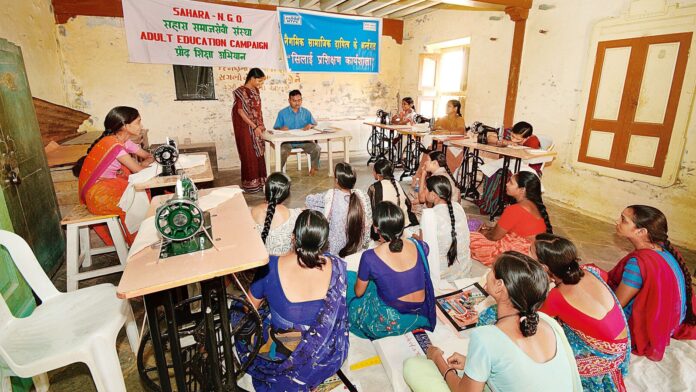All put most of the onus of these trends on funders, not on the NGOs—big or small—that are pushed along the dimensions of fakeness and flakiness by individual funders and the dangerous momentum in this sector.
But they were scathing about a certain set of NGOs that are tapping these funder-led trends to position themselves as self-appointed guardians and guides (SAGs) of India’s social sector.
Not only are they cornering a disproportionate share of the available funding for themselves, they also influence who else gets how much money.
In some cases, they have become intermediaries. Funders give them money and they in turn decide which NGOs to fund. This is called ‘on-granting.’ Equally if not more damaging is their influence on what is seen by funders and often also the wider public as good or bad work.
For sure, all SAGs are not big, nor have all big NGOs become SAGs. Nor is all ‘on-granting’ bad. SAGs are both big and small. Some do on-granting and some don’t. Some of them work across the country and some dominate certain regions.
Instead of taking names, let’s consider the five kinds of fakeness of these NGOs-turned-SAGs, including those aspiring to SAG-hood.
The first two kinds of fakeness are deeply inter-related: the fakeness of scale and the fakeness of depth. Often, this is about projecting the scale of your work as large, or as large as possible, through metrics and narratives which let you side-step the matter of the depth and intensity of that work.
There are myriad examples of this. Here is one. Some of these NGOs will claim that they work in multiple states, while all they do is work with some state-level body or department to set up so-called project management units, which are usually nothing more than ‘executive assistant’ support to senior officers.
“Working in five states” tends to convey that they work across entire state systems, while that is far from the truth. And many of them will have a glib description of how they are “catalysing systemic change.”
Another common example is a claim like “we work in 10,000 schools,” while all they have done is distributed some books in those 10,000 schools, and perhaps conducted a one-hour online seminar on how to use those books.
Some of these SAGs have invented a far more clever and convincing approach. They will work at depth and with great intensity at a genuinely manageable small scale.
And then, some small element or ‘method’ of that work will be disseminated at a much larger scale. This lets them claim false credit for a larger-scale operation, often citing the same mantra of ‘systemic change.’
All of this is a play between the depth and intensity of work on one hand, and the scale at which the work happens, finessed by the words chosen to project this work appropriately. Let us note that fakeness is not the same thing as crookedness.
“We dug 20 open wells,” when they dug five, is crookedness. “Our programme worked with 200 panchayats to develop open wells,” when all they did was distribute some literature among panchayats is fakeness.
The third kind of fakeness summons a word often used with a tinge of unconscious hubris: ‘impact.’ Combining overstatement of scale and depth leads to large claims about effects. SAGs usually have seemingly good data to back these claims because they are familiar with what exactly will be convincing.
There is no way for funders to validate such claims at any level of meaningful detail. Genuine NGOs that give an honest assessment of the effects of similar work are pooh-poohed for not being ‘strategic’ or ‘ambitious’ or smart enough.
Faking immersion in ground-level reality and being “of the people” is the fourth kind of fakeness. For effective work, the centrality of truly understanding what is going on in this country in all its nooks and corners, along with the why and how of it, is universally acknowledged.
Which is why being in the heat and dust and grime of the country is a true virtue. SAGs and their leaders, though, have made a fine art of conveying that they are immersed deeply in ‘real India,’ while actually spending most of their time and energy in networking with funders and bigwigs at conference circuits and in the corridors of power.
Their language and attire are carefully constructed to orchestrate perceptions. Many of them have a series of gripping anecdotes from the ground for funders, who are all too ready to believe them.
The fifth kind of fakeness is that of purpose and commitment. Most of these SAGs started with good intentions, usually with real commitment and genuine purpose.
But over time, in the reality of their actions, both their purpose and commitment have become somewhat fake, substituted by a hunger for visibility and power. Many of them are unaware of this corrosion at the core, much like the denouement of tragedies in the Mahabharata.
I have little hope that these SAGs can reform themselves to become simple good NGOs. There is a symbiotic relationship between the almost-wilful gullibility of NGO funders and the obliging fakeness of SAGs.
Funders need to step out of it and not keep sliding down this slope tethered to SAGs. All other NGOs, the ones that haven’t taken this tragic trajectory, need to guard against following the fake and flaky.
#fake #NGOs #actual #dogooders #Heres #guide
